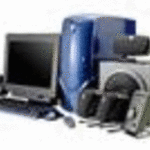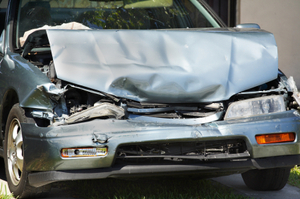Even basic computer terminology can be confusing to the novice computer user. Computers have been made so user-friendly that knowing exact definitions of the various terms is not strictly necessary for everyday use. However, most people who are learning to use their new computer, also want to understand at least a little about the machine. The following is a list of the most basic terms common to just about all machines.
HARDWARE: This is the physical part of the computer system. It is the mechanical, magnetic and electrical parts that have been assembled into the “box” you call a computer.
SOFTWARE: These are the programs installed on your computer. Some of these programs run in the background, invisible to you. Others are the programs you are more familiar with, like your word processing program or your web browser (if you’re reading this on the web, I don’t need to define “browser, do I?).
OPERATING SYSTEM: The most critical piece of software for your computer. It is the “master program”, without which, your computer will not work. It controls the overall operation of the machine. Most importantly to you, it provides the means for you to actually USE your computer by providing an interface between you and the various devices (mouse, keyboard, etc) and software that are connected/installed on your system.
PC: This is short for “personal computer.” A personal computer is a computer intended for only one user at a time. In the strictest sense, “PC” refers only to a specific class of personal computer originally made by IBM. Today it is more commonly used to refer to any personal computer (except, possibly, the Mac. See below).
MAC: This is short for “Macintosh”, a type of personal computer manufactured by Apple, Inc. The Mac was the first computer to use icons to navigate around files. Strictly speaking, the Mac is a personal computer, but NOT a PC. Although the definition of PC has loosened considerably, most people still understand a Mac to be a completely different animal from any other personal computer. Especially around Mac fans, NEVER refer to a Mac as a PC if you want to get out alive!
MOUSE: The small, plastic flattened-egg shaped device that controls the cursor on your computer screen. You move the cursor by moving the mouse around on a “mousepad,” or any other textured surface. The mouse has two buttons for clicking to perform an action (right-click by clicking the button on the right and left-click with the left button).
TOUCHPAD: This is the laptop equivalent of a mouse. Instead of dragging the mouse around, you move the cursor by moving your finger around the touchpad. It also has the two buttons for left- and right-clicking, just like a mouse.
CURSOR: The cursor is one of two things. First, it is the “arrow” or other shape that moves as you move your mouse. It shows you what you are pointing at so that you can perform your next action, usually clicking to select something. The cursor is also the symbol, usually a flashing vertical line, that appears in word processors or other text fields to indicate where you are typing.
RAM: A term meaning “random access memory”. This is the short-term memory of the computer. It is where in-use information is temporarily stored. RAM is only retained while the computer is turned on. This is why it is so important to constantly SAVE your work to your hard disk, where it stays even when the power is off.
HARD DISK: The storage disk that is inside your computer. This disk is not removable and can store much more information than any removable storage media.
ROM: This is short for “read-only memory”. It is a type of memory that can be read, but not changed. This is where the operating system and other pieces of information necessary to the operation of the computer are stored.
CPU: This is the “central processing unit”. The CPU is the “brain” of the computer. It interprets and executes the instructions of the various programs on your computer.
USB port: This is where you plug in various external devices. It is a newer, and very versatile type of connection. There is no more trying to find the right type of cable for your printer or other external device. Most devices now use this type of connection. This includes printers, keyboards, scanners, digital cameras and more.
FLASH DRIVE: This is my favorite example of what can plug into that USB port. These drives are also known as “pen drives”, “thumb drives” and “USB drives”, among other names. They are a type of removable memory. Files can be saved to these drives just like saving to your hard drive. Then you have the convenience of being able to use them at any other computer. They are small, easy to carry and easy to use.
FLOPPY DRIVE/FLOPPY DISK/DISKETTE: This is an older type of storage device, but is still found on many desktop computers. The disks are little 3.5 inch square plastic (and not very floppy) cases with a magnetic disk inside. The drive is the little slot on the front of the computer where you insert the disk. These are not used much anymore, as the most they can hold is about 1.4 MB of information. They are called “floppy” because the actual magnetic disk actually IS floppy. Also, the original external storage disks were encased in a thin, cardboard-like material. They were about 5 ¼ inches square and bendable, or “floppy”!
ZIP DRIVE: This is another type of removable memory. The zip drive is essentially an external floppy disk drive that uses special floppy disks capable of holding up to 750 megabytes of information. The original disks held only 100 MB, but later improvements resulted in disks holding 250 MB and then 750 MB of information.
I think I have given you a good foundation here, and I don’t want to overload your brain with definitions. I know there will be many more unfamiliar words as you continue to learn the use of the computer. I will leave you with an easy way to find the definition of those words using the Google search engine. NO! DO NOT just type in the word. You will get entirely too many results that will not define the word. Instead, use the “define” query. For example, to find the definition of “zip drive”, type “define: zip drive” into Google (without the quotes) and you will get a whole list of definitions from around the web. Good luck and happy computing!




